Sustainability and the Premortem Tool: Slide Presentation
AHRQ Safety Program for Surgery
Slide 1: AHRQ Safety Program for Surgery—Sustainability
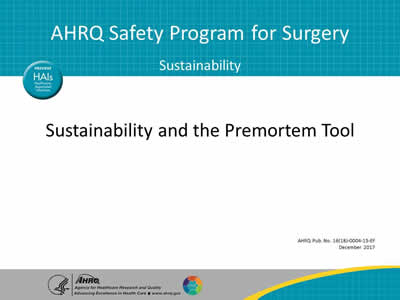
Sustainability and the Premortem Tool
Slide 2: Learning Objectives
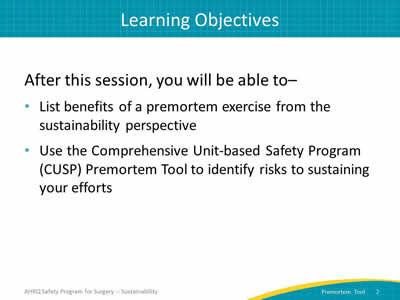
After this session, you will be able to–
- List benefits of a premortem exercise from the sustainability perspective.
- Use the Comprehensive Unit-based Safety Program (CUSP) Premortem Tool to identify risks to sustaining your efforts.
Slide 3: Problem Statement
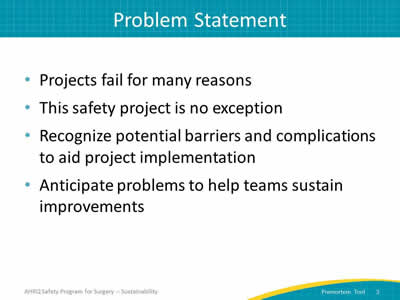
- Projects fail for many reasons.
- This project is no exception.
- Recognize potential barriers and complications to aid project implementation.
- Anticipate problems to help teams sustain improvements.
Slide 4: Preparing To Lead1
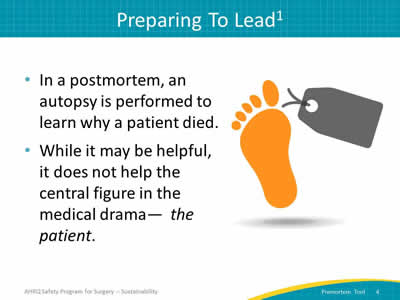
- In a postmortem, an autopsy is performed to learn why a patient died.
- While it may be helpful, it does not help the central figure in the medical drama—the patient.
Image: Illustration of a foot with a toe tag.
Slide 5: Preparing To Lead
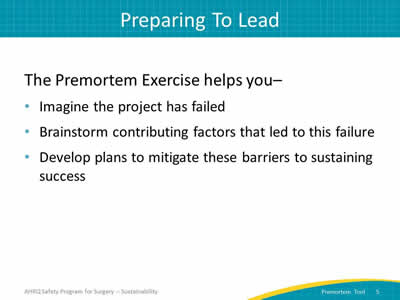
The Premortem Exercise helps you–
- Imagine the project has failed.
- Brainstorm contributing factors that led to this failure.
- Develop plans to mitigate these barriers to sustaining success.
Slide 6: Preparing To Lead
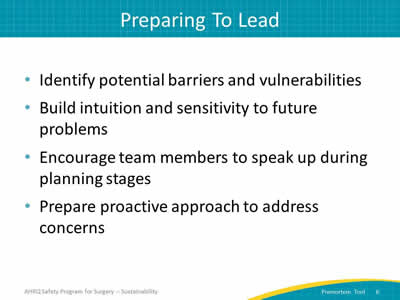
- Identify potential barriers and vulnerabilities.
- Build intuition and sensitivity to future problems.
- Encourage team members to speak up during planning stages.
- Prepare proactive approach to address concerns.
Slide 7: Premortem Exercise
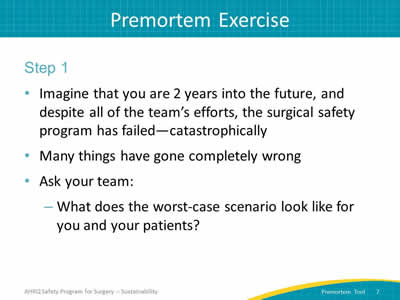
Step 1
- Imagine that you are 2 years into the future, and despite all of the team’s efforts, the surgical safety program has failed—catastrophically.
- Many things have gone completely wrong.
- Ask your team:
- What does the worst-case scenario look like for you and your patients?
Slide 8: Premortem Exercise
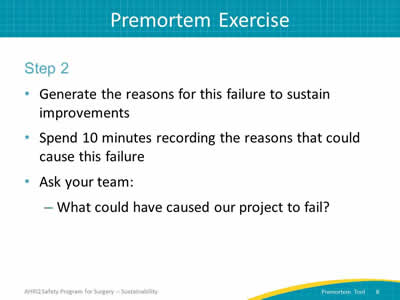
Step 2
- Generate the reasons for this failure to sustain improvements.
- Spend 10 minutes recording the reasons that could cause this failure.
- Ask your team:
- What could have caused our project to fail?
Slide 9: Premortem Exercise
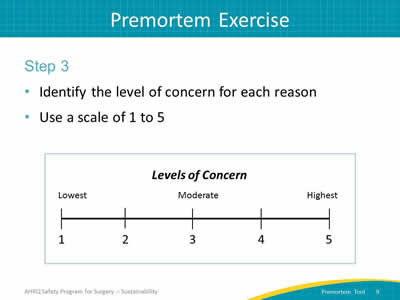
Step 3
- Identify the level of concern for each reason.
- Use a scale of 1 to 5.
Image: Level of concern (Likert scale) uses a scale of 1 to 5 where Lowest (1), Moderate (3), and Highest (5).
Slide 10: Premortem Exercise
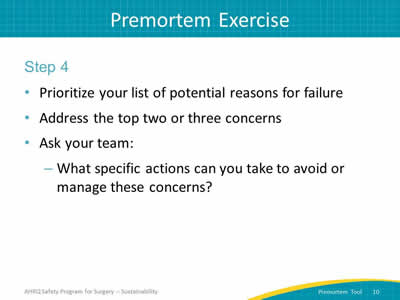
Step 4
- Prioritize your list of potential reasons for failure.
- Address the top two or three concerns.
- Ask your team:
- What specific actions can you take to avoid or manage these concerns?
Slide 11: CUSP Premortem Summary
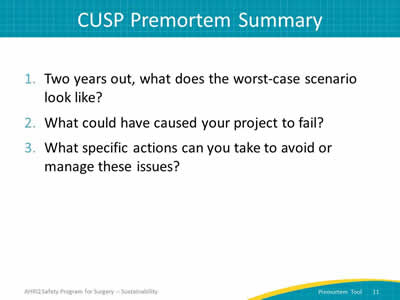
- Two years out, what does the worst-case scenario look like?
- What could have caused your project to fail?
- What specific actions can you take to avoid or manage these issues?
Slide 12: Discussion
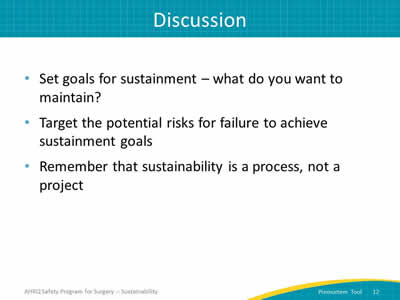
- Set goals for sustainment—what do you want to maintain?
- Target the potential risks for failure to achieve sustainment goals.
- Remember that sustainability is a process, not a project.
Slide 13: Discussion Questions
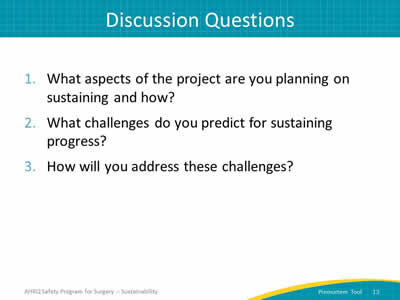
- What aspects of the project are you planning on sustaining and how?
- What challenges do you predict for sustaining progress?
- How will you address these challenges?
Slide 14: References
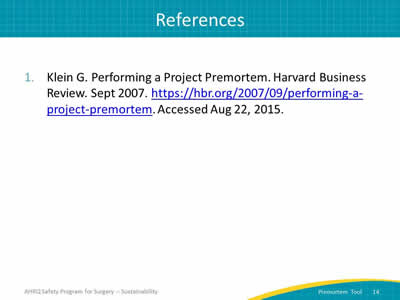
- Klein G. Performing a Project Premortem. Harvard Business Review. Sept 2007. https://hbr.org/2007/09/performing-a-project-premortem. Accessed Aug 22, 2015.



